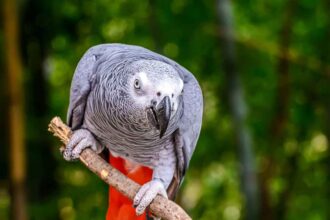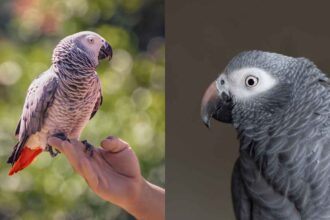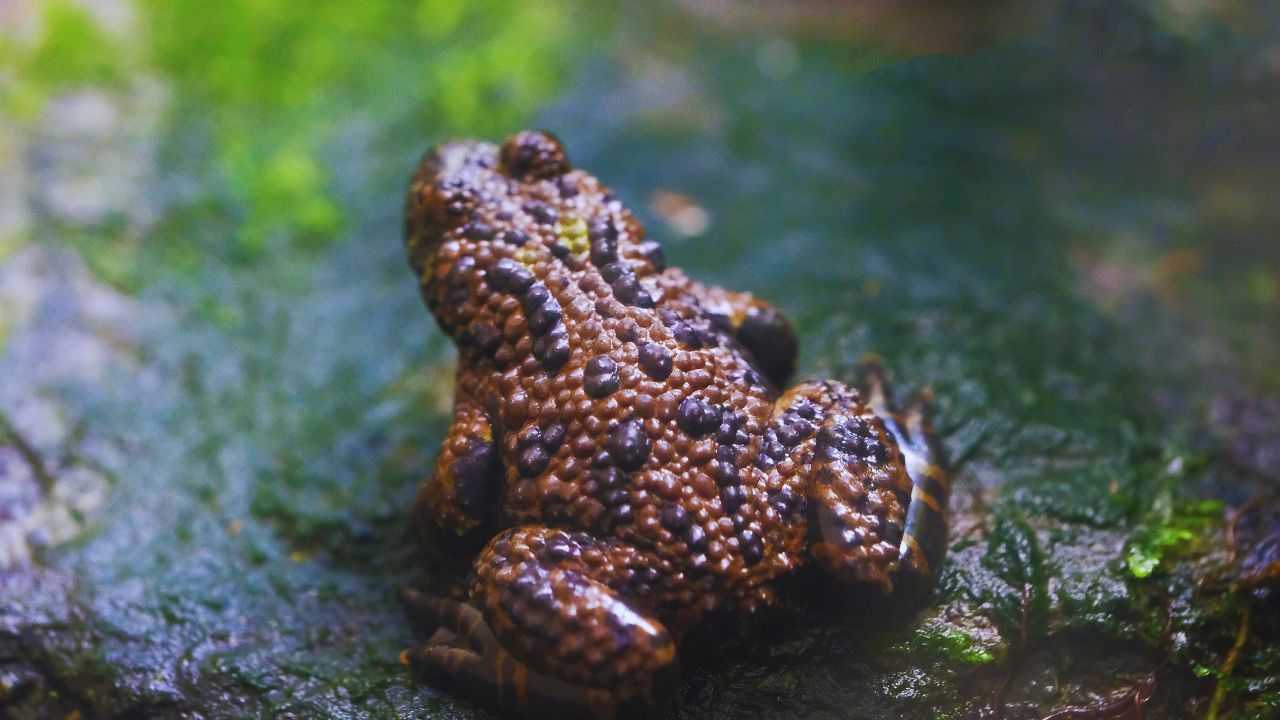Comprehending the Lifespan of Frogs: What Is Their Average Lifespan?
Frogs are unique in both human culture and ecosystems because of their amazing jumping ability and characteristic croaks. Few may be aware of how long these amphibians may live, even though many are acquainted with their life cycle and behaviour. Frogs’ lifespans vary greatly depending on their species and habitat, from their lowly origins as eggs to their mature adult forms.
This article will examine the average lifetime of frogs by going over each stage of their life cycle and looking at the variables that affect it. We’ll also look more closely at how long each species of frog typically lives, emphasising the ones that typically live the longest. This article will provide you a thorough explanation of frog lifespan, whether you’re a frog aficionado or just interested in learning more about these amazing animals.

Frogs’ Average Lifespan
Frogs live two to ten years on average in the wild. Nevertheless, depending on the species and whether the frog is housed in captivity or the wild, this range may vary significantly. For example, it has been reported that pet tree frogs may live up to 20 years, while some species of toads can live up to 40 years in captivity.
Despite being lumped together, frogs and toads vary in a few important ways that might impact how long they live. Though not all frogs are toads, all toads are often thought of as frogs. In comparison to their frog relatives, toads often have bigger bodies and rougher, thicker skin. Toads may also have toxic tendencies, which might help them live longer lives by keeping predators away.

Additionally, toads are more able to travel far from bodies of water than frogs, who normally need wet surroundings to thrive. Toads often outlast frogs due to their contrasting physical traits and preferred environment, particularly in the wild. The many habitats that frogs and toads live in, together with their unique physical characteristics, all contribute to how long they live.
| Frog Species | Lifespan in the Wild | Lifespan in Captivity |
|---|---|---|
| Bullfrog | 5-8 years | Up to 16 years |
| Fire-bellied Toad | 5-10 years | Up to 20 years |
| Common Toad | 10 years | Up to 40 years |
| Red-eyed Tree Frog | 5 years | Up to 20 years |
| Dwarf Frog | 6-8 years | Up to 20 years |
| Grey Tree Frog | 5-7 years | 15-20 years |
| Poison Dart Frog | 10 years | Up to 20 years |
The Frog’s Life Cycle
Frogs go through multiple unique developmental phases before becoming adults. This life cycle is essential to comprehending how long they live since every stage offers different chances for survival as well as difficulties.
Stage of the Egg
A frog’s existence starts as an egg. When frogs and toads deposit their eggs in the water, they often look for quiet, protected areas to protect their young. A male frog fertilises the spawns, which are the clusters of eggs deposited.
The majority of frogs do not tend to their eggs, making them susceptible to environmental hazards and predators. Certain species do, however, display protective tendencies, watching after their eggs until they hatch. Depending on the species, the egg stage usually lasts between two and four weeks until the eggs hatch into tadpoles.
Stage of Tadpoles
The subsequent stage of the frog’s life cycle is represented by tadpoles. They eat the remains of their egg to survive after hatching, which provides them with the energy to start swimming and eating. Tadpoles only have front legs, a tail, and gills, unlike adult frogs.
Tadpoles concentrate on growing and acquiring the physical traits required for frog life at this period. They mostly consume algae and other plant material, which helps them progressively develop the muscles they’ll need for life on land in the future. Their tails get shorter as they get older, and they start to look like adult frogs.
Stage of Adulthood
Frogs mature at the age of three months. Their legs are completely formed at this point, enabling them to walk and leap with grace. They can now live on land as well as in water because to a change in their skin that covers the gills they once used for breathing.
Frogs do not attain sexual maturity until they are at least a year old, even if they reach physical maturity at three months. This indicates that frogs are completely developed yet unable to reproduce for a certain amount of time. A frog’s ability to mature and pass on genetic traits to their progeny depends on how well they navigate the transition from tadpole to adulthood.

| Life Cycle Stage | Description | Duration |
|---|---|---|
| Eggs | Eggs are laid in clusters called spawns in water and are fertilised by male frogs. | 2-4 weeks |
| Tadpoles | Tadpoles hatch, eat their egg casing, and develop by feeding on algae and plants. | Several weeks until adulthood |
| Adults | Frogs reach adulthood, develop legs and lungs, and can live on land and water. | 3 months to reach adulthood; 1 year to sexual maturity |
Factors Affecting the Lifespan of Frogs
A frog’s lifetime is determined by a number of circumstances, such as whether it is kept in captivity or the wild. Because there aren’t any predators or other dangers in their native habitat, frogs kept in captivity often have longer lifespans than those found in the wild.
Longevity in captive frogs is facilitated by regular availability to food, a stable environment, and defence against illness. On the other hand, a variety of issues, such as habitat loss, predation, and environmental changes, face wild frogs. Their lifetime may be considerably shortened by these circumstances, making it more difficult for them to live to an old age.

The species of a frog has a significant impact on its lifetime as well. The physical traits, habits, and ecological niche of some frog species contribute to their naturally longer lifespans than those of others. For example, since they can stave off predators, many deadly frogs live longer. They have an additional layer of defence that non-poisonous frogs do not have because of their vivid, warning colours, which alert prospective attackers that they are harmful to ingest.
Lifespan of Various Species of Frogs

The lifespans of frog species vary greatly; some may live for just a few years, while others might live for decades. The typical lifespans of a few common frog species are listed below:
Bullfrog: In the wild, bullfrogs may live for five to eight years, but in captivity, they can live up to sixteen years. They have a reasonably long lifetime because of their aggressive behaviour and large size, which help them evade many predators.
Fire-bellied Toad: The Fire-bellied Toad is a species of toad that may live up to 20 years in captivity but only 5–10 years in the wild. They may live longer in the wild because of their brilliant colouring, which alerts predators to their toxicity.
Common Toad: Although they may live up to 40 years in captivity, common toads often only survive 10 years in the wild. They are able to survive longer because of their warty skin and capacity to release poisons that deter predators.
Red-eyed Tree Frog: Distinguished by their remarkable appearance, red-eyed tree frogs may survive up to 20 years in captivity and around 5 years in the wild. They are able to evade many of the hazards that other frogs encounter because of their arboreal lifestyle and nocturnal behaviour.
Dwarf Frog: In the wild, dwarf frogs may live up to 8 years, but in captivity, they can live up to 20 years. Their lifespan is partly due to the safety against predators that their tiny size and underwater environment provide.
Grey Tree Frog: These frogs may last up to 15-20 years in captivity, while they only live 5-7 years in the wild. By blending in with their environment and changing colour, they may evade predators and improve their chances of surviving.
Poison Dart Frog: With a lifetime of up to 20 years in captivity and 10 years in the wild, poison dart frogs are among the longest-living frog species. They may live long lives because of their strong poisons and vivid colours, which render them almost impervious to predators.





